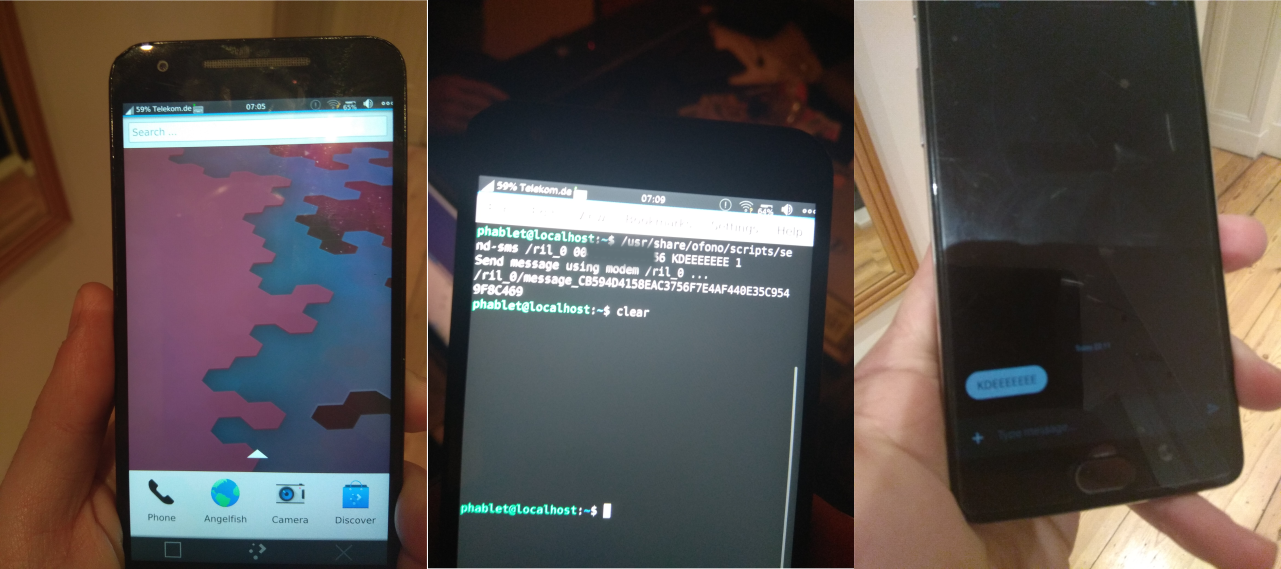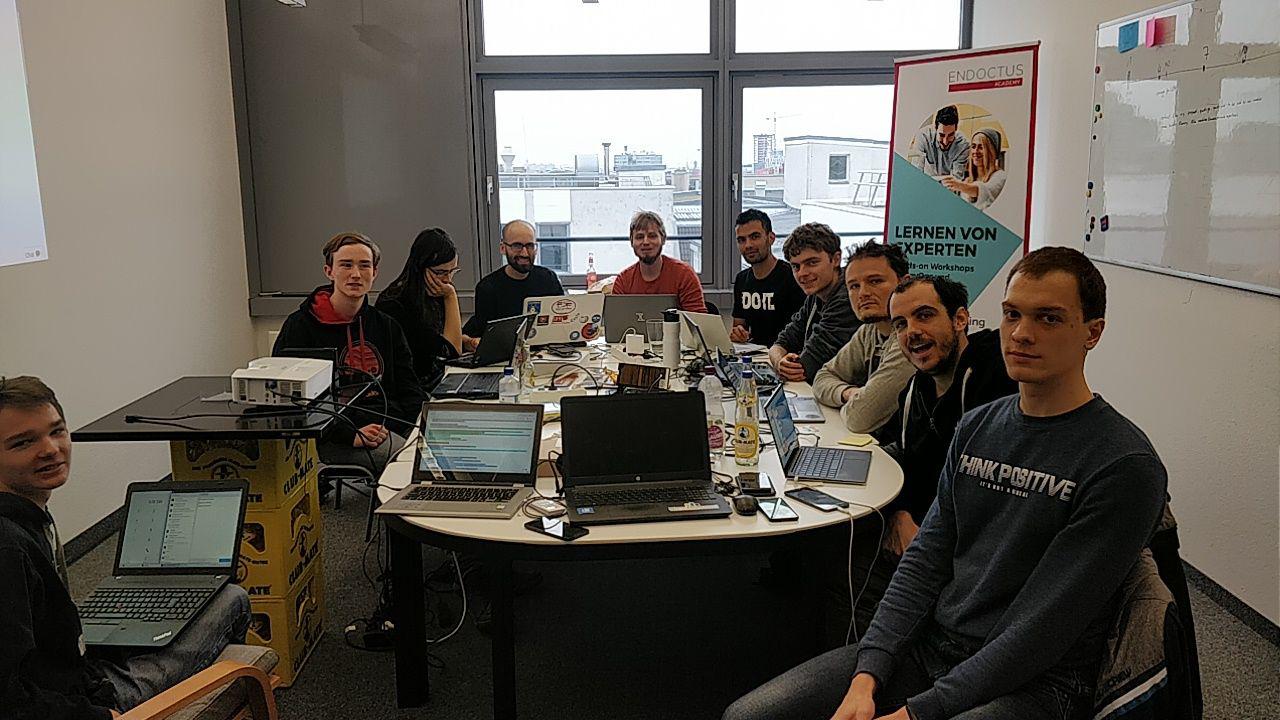As soon as I offered my mobile phone number for the proof of concept of sending an SMS from a phone running Plasma Mobile, I felt like a student in the Stanford Research Institute expecting the very first message via the ARPANET from UCLA . OK, that’s certainly an exaggeration, but it shows that the sprint, except the technical achievements, it was also full of community spirit and sometimes, emotions.
All these and many more happened in the Plasma Mobile sprint. From the 4th to the 9th of February the Plasma Mobile contributors met in the Endocode offices in Berlin. I was there for the whole week and I enjoyed every single moment.
 Sending SMS with Plasma Mobile
Sending SMS with Plasma Mobile
But why to bother to get involved with Plasma Mobile? After all, every floss initiative on the mobile field is damned to fail, isn’t it? Even if this was true -which it is not, since every failure gives lessons and future initiatives may base their work on top of it- we really need mobile devices based on free software.
Since the mobile phone already is the primary computational device -at least for content consumption and communications- we deserve devices that respect our digital rights. We need secure devices and platforms that respect our privacy - in reality, not like the funny popups of the websites, full of trackers, telling us that they value our privacy... And for this to happen, mobile users should take back the control of their devices. Relying on closed platforms, like the ones currently on the market, it is the phone that controls us; and this should not be the case.
Why to bother to bring KDE Plasma to mobile phones? Well, the KDE community has already shown that it can offer a full featured desktop workspace and a large ecosystem of applications. It is the desktop environment that I use on my professional and personal workstations and having contributed to KDE for many years I think that Plasma Mobile is the perfect place for me to be.
The sprint was a quite successful event, from a technical as well as from a community viewpoint. We worked on several issues that we had set as priorities before the sprint; high DPI scaling has improved, new features have been added and bugs have been fixed on applications like Angelfish, Kirigami Gallery and Discover (among others) and a new rootfs for devices running on Halium has been published. Also, we configured the telephony infrastructure and we revamped the documentation.
 Part of the team - important pieces missing
Part of the team - important pieces missing
Most importantly, we strengthened the bonds within and outside the team. Working together, sharing ideas, talking about KDE, technology and many more for a whole week is invaluable for building the foundations of a successful team. At the same time, since we are not creating Plasma Mobile for ourselves or for a bunch of friends, we spent a couple of hours on the sprint topics suggested by the community. Also, the AMA session was a great opportunity for us to get feedback from the community, reflect on what we have done so far, what it is the impact of our work, and what we think about the future.
Looking to the future, it is not easy to make predictions about free software on mobile. On the one hand, there are many external factors -binary blobs, old and customized Linux kernels, the imminent nightmare of Google Fuchsia, to name some of them- that put obstacles on our way. On the other hand, there are communities like Halium and postmarketOS that offer us the opportunity to run Plasma Mobile on various devices; and there is also hardware like PinePhone and Librem 5.
What is certainly true is that the current proprietary mobile environment does not fit many of us. And it also true that working on a free software project for mobile devices is challenging, exciting and by all means it is worth it. Feel free to join us.